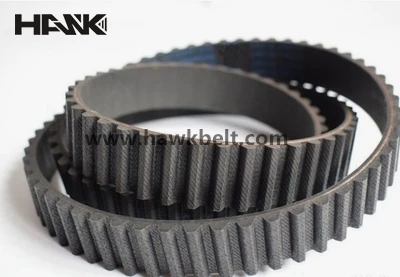- Arabic
- French
- Russian
- Spanish
- Portuguese
- Turkish
- Armenian
- English
- Albanian
- Amharic
- Azerbaijani
- Basque
- Belarusian
- Bengali
- Bosnian
- Bulgarian
- Catalan
- Cebuano
- Corsican
- Croatian
- Czech
- Danish
- Dutch
- Afrikaans
- Esperanto
- Estonian
- Finnish
- Frisian
- Galician
- Georgian
- German
- Greek
- Gujarati
- Haitian Creole
- hausa
- hawaiian
- Hebrew
- Hindi
- Miao
- Hungarian
- Icelandic
- igbo
- Indonesian
- irish
- Italian
- Japanese
- Javanese
- Kannada
- kazakh
- Khmer
- Rwandese
- Korean
- Kurdish
- Kyrgyz
- Lao
- Latin
- Latvian
- Lithuanian
- Luxembourgish
- Macedonian
- Malgashi
- Malay
- Malayalam
- Maltese
- Maori
- Marathi
- Mongolian
- Myanmar
- Nepali
- Norwegian
- Norwegian
- Occitan
- Pashto
- Persian
- Polish
- Punjabi
- Romanian
- Samoan
- Scottish Gaelic
- Serbian
- Sesotho
- Shona
- Sindhi
- Sinhala
- Slovak
- Slovenian
- Somali
- Sundanese
- Swahili
- Swedish
- Tagalog
- Tajik
- Tamil
- Tatar
- Telugu
- Thai
- Turkmen
- Ukrainian
- Urdu
- Uighur
- Uzbek
- Vietnamese
- Welsh
- Bantu
- Yiddish
- Yoruba
- Zulu
സെപ് . 04, 2024 11:40 Back to list
variable speed belt
Understanding Variable Speed Belts Efficiency in Motion
In the age of automation and advanced manufacturing, variable speed belts have emerged as critical components in various applications. They play an essential role in enhancing the efficiency and flexibility of machinery, particularly in heavy-duty settings such as manufacturing plants, conveyor systems, and material handling operations. This article delves into the significance, operation, and benefits of variable speed belts.
Variable speed belts are designed to allow the speed of a motor-driven system to change dynamically during operation. This adaptability is achieved through the use of special pulleys and belt configurations, enabling operators to adjust the belt's speed according to the specific requirements of the task at hand. Unlike traditional fixed-speed belts, variable speed belts offer a range of operational speeds, enhancing the versatility of the equipment they drive.
One of the standout features of variable speed belts is their ability to optimize energy consumption. In a manufacturing environment, processes often require different speeds at different times. By using variable speed belts, companies can reduce energy waste by running machinery at lower speeds when full power is not needed. This not only conserves energy but also extends the life of the equipment, leading to significant cost savings over time.
variable speed belt

Moreover, variable speed belts contribute to improved product quality. In processes such as packaging or assembly, maintaining the right speed is crucial for ensuring that products are handled correctly and do not experience damage. With the precise control provided by variable speed belts, manufacturers can achieve consistent results and improve their overall production quality.
In addition to energy efficiency and quality control, variable speed belts enhance overall system performance. They allow for smoother starts and stops, reducing mechanical wear and tear associated with abrupt changes in speed. This feature is particularly beneficial in applications that require careful load handling, as it minimizes the risk of overloading or jamming the system.
The installation and maintenance of variable speed belts are also relatively straightforward. Modern advancements in engineering and design have led to the creation of user-friendly belts that can be easily integrated into existing systems with minimal downtime. Furthermore, regular maintenance of these belts can ensure sustained performance, making them a dependable choice for manufacturers.
In conclusion, variable speed belts represent a significant evolution in the design and functionality of industrial machinery. Their ability to adapt to varying speed requirements, promote energy efficiency, enhance product quality, and improve system performance makes them indispensable in today's manufacturing landscape. As industries increasingly focus on sustainable practices, the demand for variable speed technologies will continue to rise, highlighting the importance of these innovative solutions in driving future advancements. Embracing variable speed belts not only paves the way for enhanced operational capabilities but also aligns with broader goals of efficiency and sustainability in engineering and production practices.
-
Korean Auto Parts Timing Belt 24312-37500 For Hyundai/Kia
NewsMar.07,2025
-
7PK2300 90916-T2024 RIBBED BELT POLY V BELT PK BELT
NewsMar.07,2025
-
Chinese Auto Belt Factory 310-2M-22 For BMW/Mercedes-Benz
NewsMar.07,2025
-
Chinese Auto Belt Factory 310-2M-22 For BMW/Mercedes-Benz
NewsMar.07,2025
-
90916-02660 PK Belt 6PK1680 For Toyota
NewsMar.07,2025
-
drive belt serpentine belt
NewsMar.07,2025

